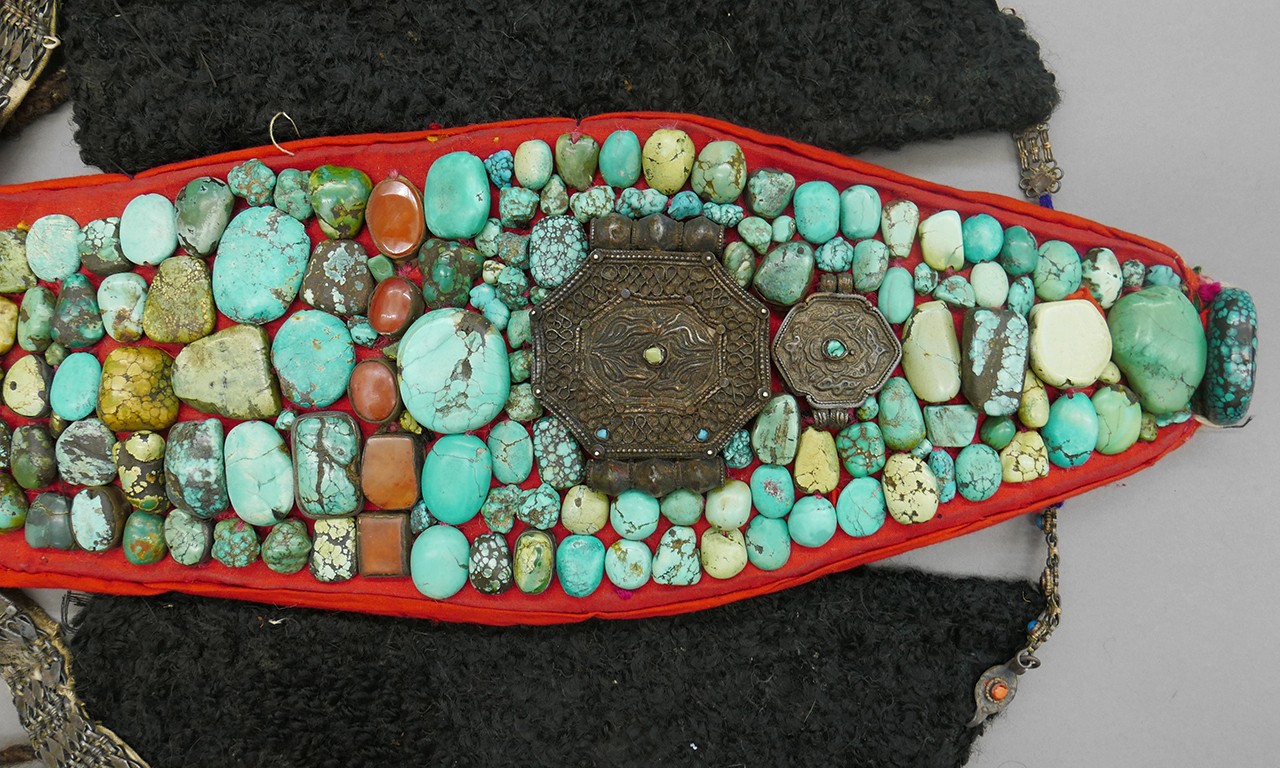 |
Headdress (Perak), late 20th Century
Ladakhi culture; Ladakh Region, Jammu and Kashmir State, India
Cotton, lambskin, yak hair, turquoise, coral, carnelian and silver; 54 × 20 × 1 3/4 in.
2019.7.1
Anonymous Gift |
Crown of the Roof of the World
Ladakh is a region of India located in the barren mountainous foothills between the Himalayas and the Karakoram Mountain Range. There, the quasi-Tibetan Ladakhi inhabitants still wear incredibly ornate costumes for festivals, weddings and other ceremonial occasions. The perak or perag headdress, so iconic to Ladakh that it is advertised throughout India, is the quintessential part of this outfit. From the front it takes the appearance of the drawn hood of a king cobra. Rather than evoking a sense of terror, however, the function of these headdresses was historically a protective one, transforming women into both guardians of the community and serving as a form of material wealth that offered women some financial independence. This post looks at a newly acquired Bowers Museum perak, exploring the history of the object, its function as a repository of material wealth, and the importance of its forms and medium.
Kupa Continuity
The lack of documentation on the early usage of the perak makes tracing the history of the object difficult. The first depictions of women wearing the headdress appear in Ladakhi temple murals and art beginning around the 16th century. Similarities between the perak and headdresses worn by neighboring cultures indicate that they either have a shared common root or that the perak evolved from other regional ceremonial headwear—the cowrie shell-studded kupas worn by the Kalash women of Pakistan, for example. In either case it was likely the queen of Ladakh that popularized the new form in the region. While turquoise was used in small quantities in early examples, peraks tended to predominantly use cowrie shells up until the early 20th century when turquoise became more readily available, further evidencing the association between Ladakh headdresses and those from the greater region.

|
|
| Three photographs of women wearing peraks from a 2007 Bowers Museum Fellows trip to Ladakh. Photograph taken by Peter Keller. |
The Peraks of Being no Wallflower
In most of the world, wealth was traditionally passed down from father to eldest son. The Ladakh practiced primogeniture as well, but the perak was an exception to this rule. Rather than being a part of a woman’s dowry, women owned these objects. When a woman’s daughter came of age to be married, the woman would bestow her daughter with own headdress and would then begin the long, costly process of beginning a new headdress for themselves—adding turquoise, coral and precious metals to their new headdress over time. In general, the headdresses are dynamic objects, with turquoise being added or removed for sale depending on the needs of the family. Early in the 20th century, when turquoise was still rare, the number of rows in a headdress also denoted the status of the wearer. By the mid 20th century, the queen of the Ladakh wore a resplendent royal headdress with nine rows of turquoise, aristocratic women wore headdresses with seven rows and so on. As turquoise has continued to become more prevalent in the region, most contemporary peraks are now fully covered by turquoise.

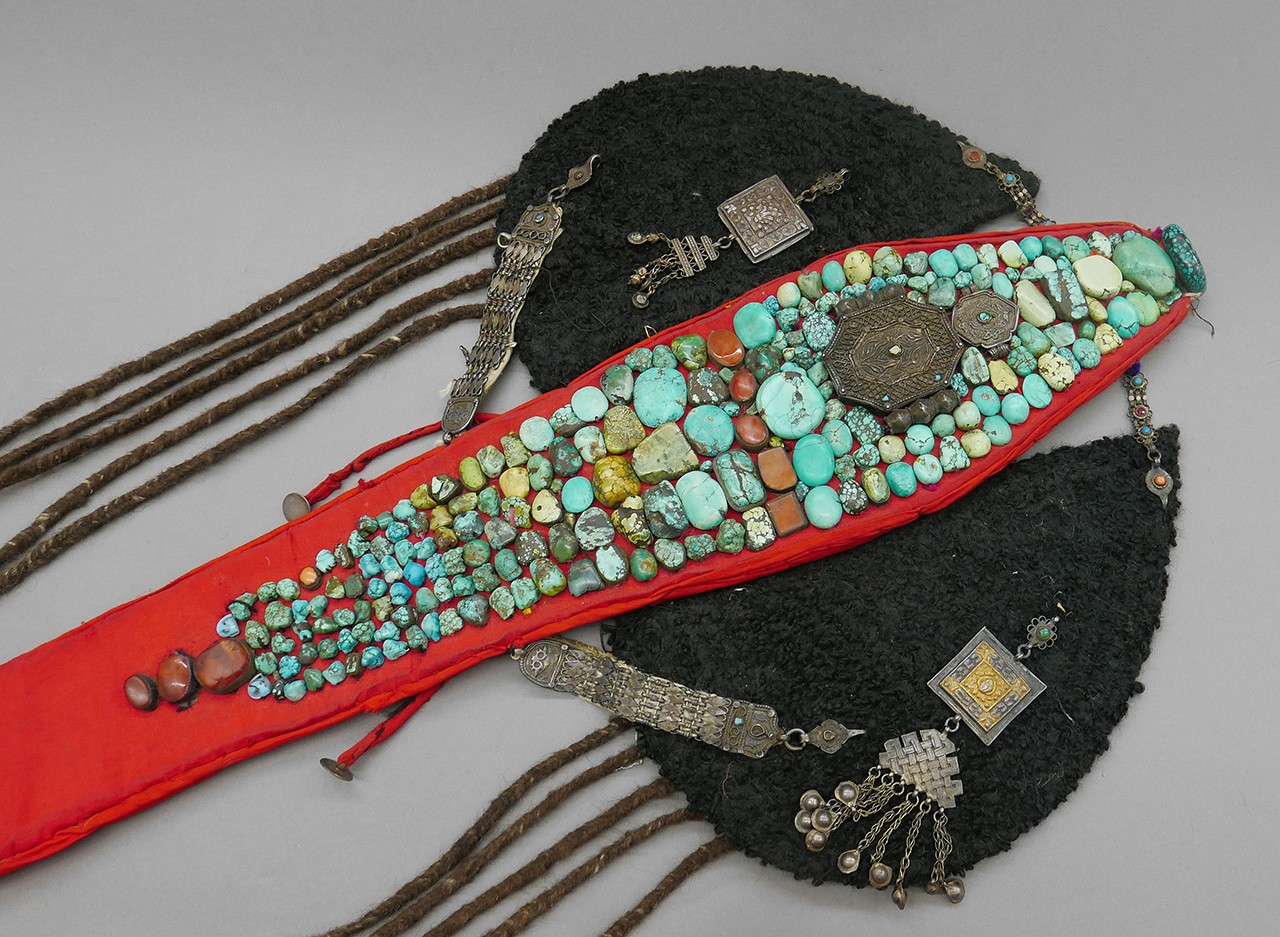 |
| Alternate view of 2019.7.1. |
Yak Hair Yak
The main body of the perak was traditionally made with leather, although stuffed, re-dyed cotton is employed in later 20th century examples. This central section is decorated with the headdress’s distinctive rows of turquoise, coral and carnelian. Silver or—in the case of some of the finest peraks—gold is used for the central amulet box of the headdress as well as other attached ornaments. The black lambswool ear flaps are secured to this main body with leather straps and intricate silver chains. Braided yak hair is sewn into the underside of these flaps and tied into a knot behind the wearer’s back. The entire headdress is balanced on the head with some additional stability provided by additional silver chains and being attached to women’s hair.
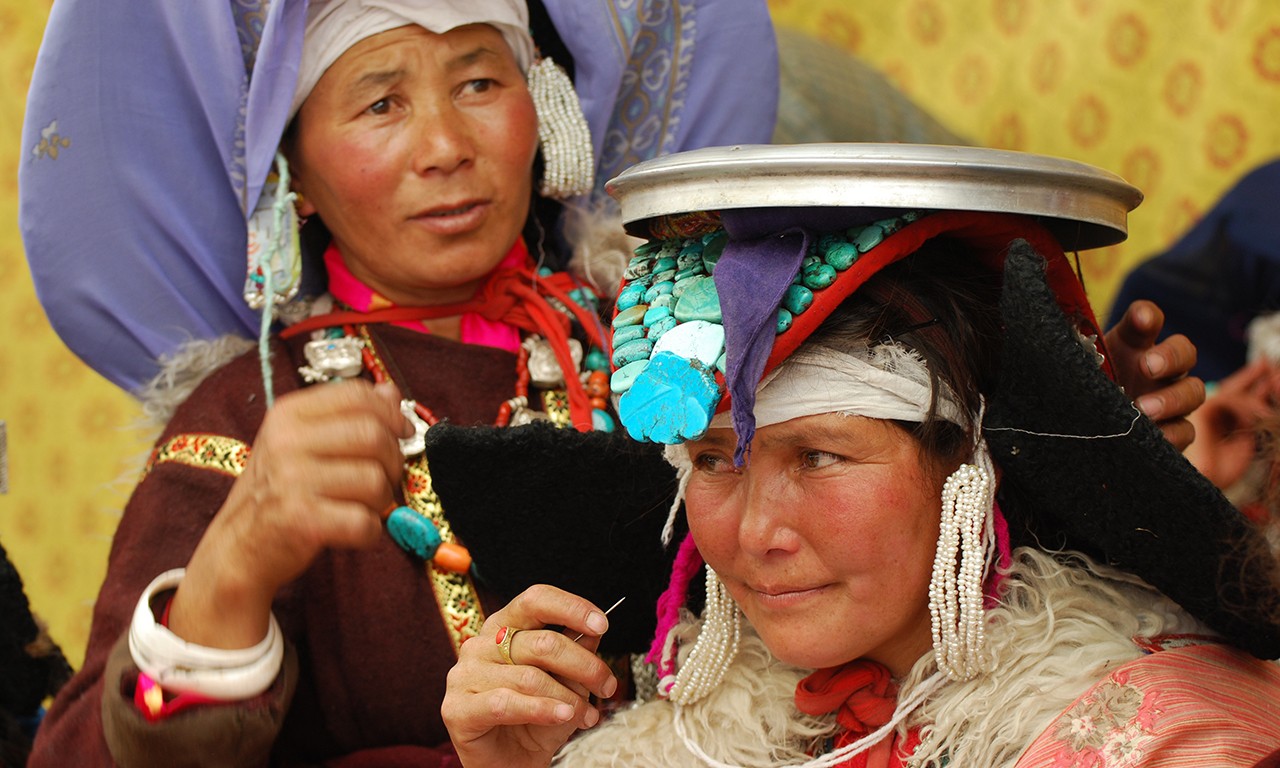 |
| Women wearing perak from a 2007 Bowers Museum Fellows trip to Ladakh. Photograph taken by Peter Keller. |
Under the Hood
Though it is anecdotally held that the ear flaps were first added to the perak by a Ladakhi queen who suffered ear aches from the mountainous region’s high winds, over time the perak and its rigid flaps came to resemble the hood of a cobra. Though the causation of this development is again unclear, over time the headdress became symbolically associated with lu, subterranean and aquatic serpent deities that reward the righteous and punish the evil. The strength of this mythological link was further reinforced by a Ladakhi belief in the supernatural abilities of gemstones like turquoise to fulfill the desires of the wearer. Together these two factors put women in the role of protectors of their communities. In the early 20th century the importance of the perak’s protective capacity grew to the point that women had to wear their perak every time they left the home. Now that Ladakhi women have significantly more autonomy, the usage of these headdresses tends to be reserved for tourism and a handful of festive occasions throughout a woman’s life.
Text and images may be under copyright. Please contact Collection Department for permission to use. References are available on request. Information subject to change upon further research.


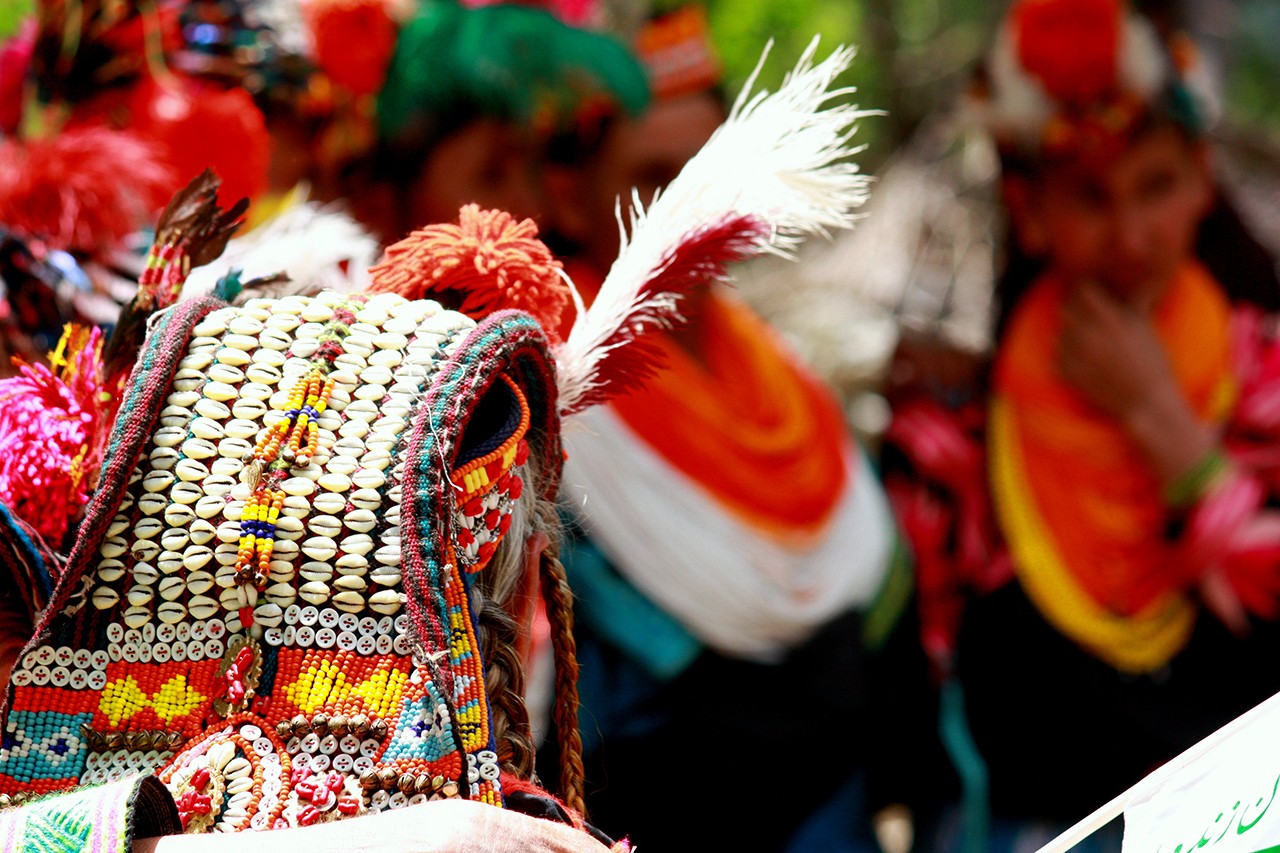
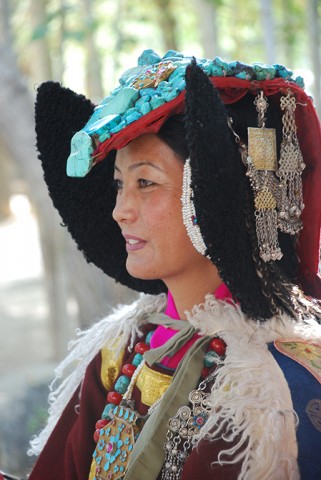
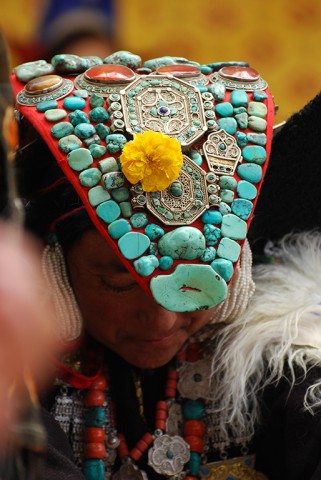
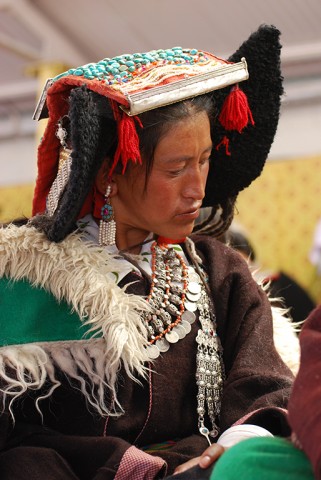


Comments